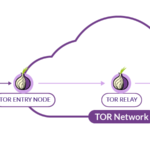Cyber attacks are a constant threat to individuals and businesses alike. They can lead to data loss, financial loss, and reputational damage. Understanding the most common types of cyber attacks and how to prevent them is essential to maintaining cybersecurity. Here are some of the most common types of cyber attacks:
Phishing
Phishing attacks are designed to trick users into providing sensitive information, such as login credentials or financial information. They often come in the form of credible-looking emails, social media messages, or texts. To prevent phishing attacks, never open suspicious emails or click on links from unknown sources, and always check the sender’s email address and URL before providing sensitive information.
Malware
Malware is malicious software designed to harm a computer or network. It can come in many forms, such as viruses, worms, and Trojans. To prevent malware attacks, always use up-to-date anti-virus software, avoid downloading attachments or clicking on links from unknown sources, and keep your software up-to-date with security patches.
Ransomware
Ransomware is a type of malware that encrypts files on a computer or network and demands payment from the victim to restore access. To prevent ransomware attacks, backup all files regularly, use up-to-date anti-virus and anti-malware software, and never download attachments or click on links from unknown sources.
Denial-of-Service (DoS)
DoS attacks are designed to overwhelm a network or system with traffic to the point of failure. To prevent DoS attacks, use a firewall to block malicious traffic, choose a hosting service with DDoS prevention measures, and keep your systems up-to-date with security patches.
Man-in-the-Middle Attacks
Man-in-the-middle (MiTM) attacks involve intercepting communications between two parties to steal or manipulate data. To prevent MiTM attacks, use encryption for sensitive communications, avoid using public Wi-Fi, and always verify the authenticity of online services before providing sensitive information.
Password Attacks
Password attacks can take many forms, including brute-force attacks, dictionary attacks, and keylogging. To prevent password attacks, use strong and unique passwords, enable two-factor authentication, and avoid sharing passwords with anyone.
Conclusion
Cyber attacks are a constant and evolving threat. Understanding their common types is essential to preventing them. By following best practices such as using strong passwords, enabling two-factor authentication, avoiding suspicious links and attachments, keeping software up-to-date, backing up regularly, and being vigilant of unusual activity, you can reduce your risk of falling victim to these attacks. Stay vigilant and stay secure.
Author Bio:
LearnPrivacy is a team of technology and cybersecurity experts with decades of experience. We have worked with numerous companies to protect organizations from cyber threats. We are passionate about educating individuals and businesses on digital privacy and security.







